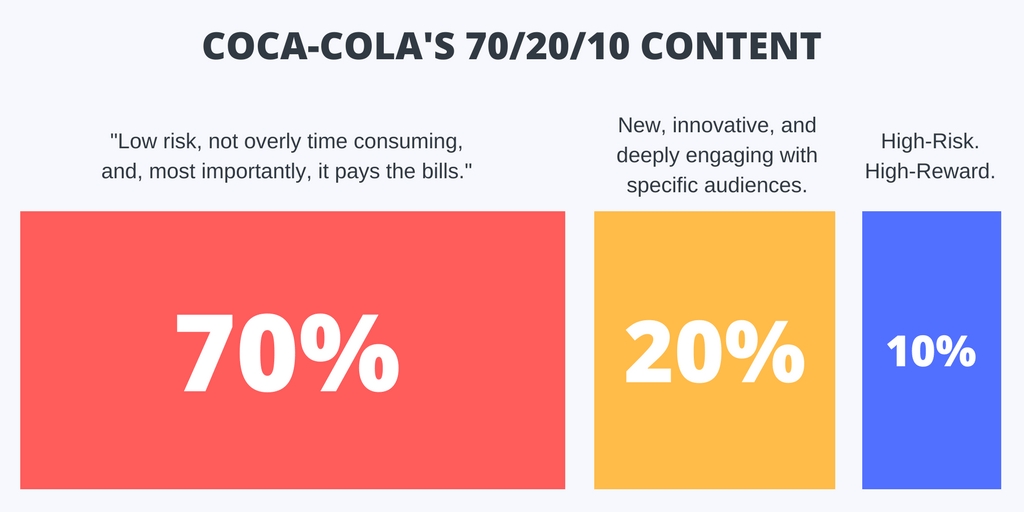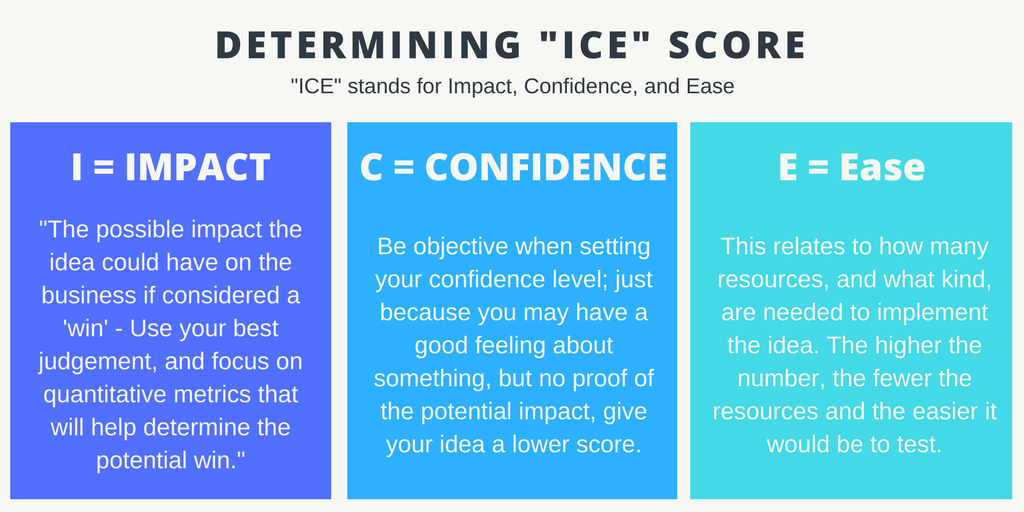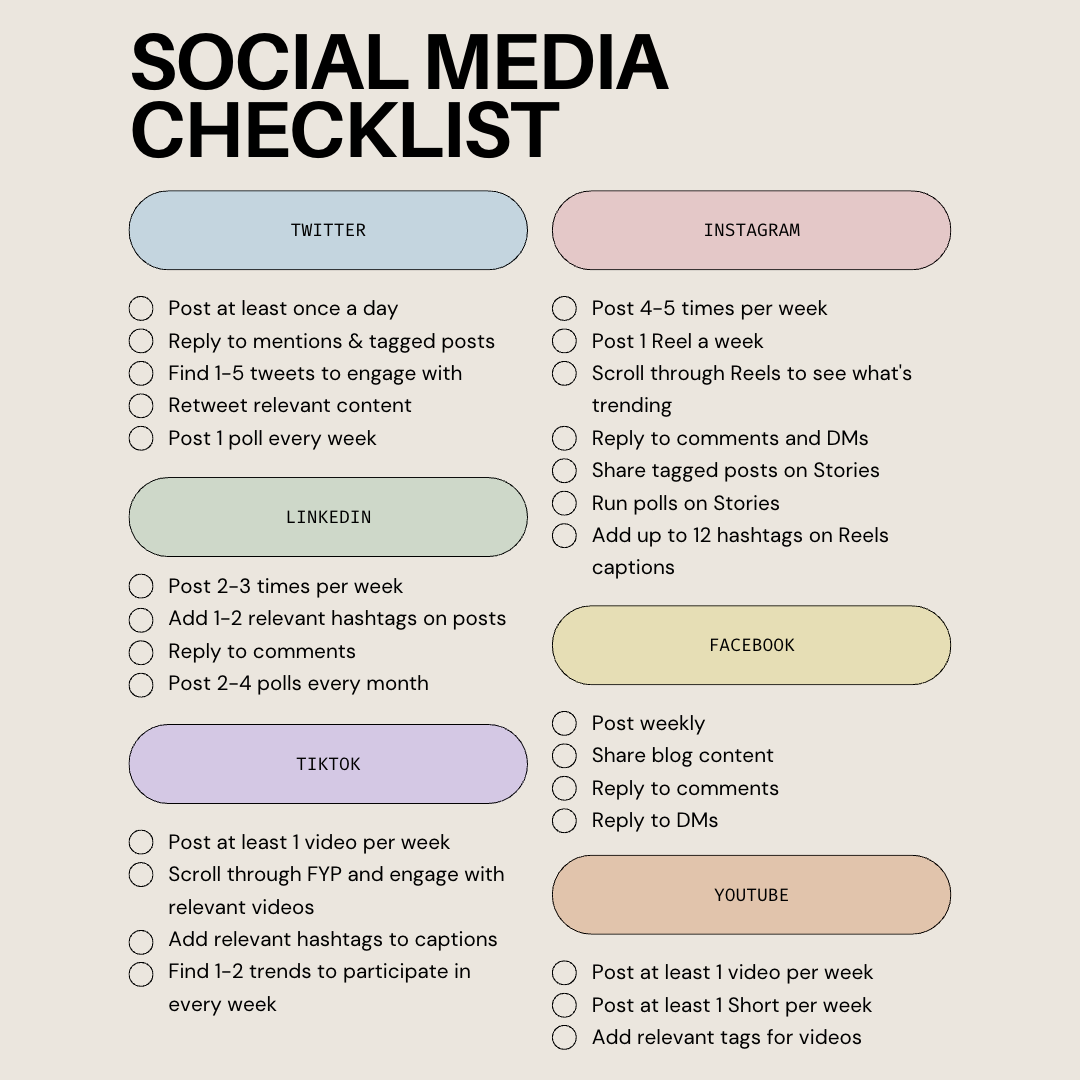One of the questions I get asked most as the social media manager here at Buffer is:
How do you break up your day in order to get the most out of social media?
Up until recently, I hadn’t really thought about it much. A little bit of content creation, curation, audience engagement, emails, outreach, and some Buffer scheduling.
I kept wondering, is there really a social media manager formula for success? How are other social media professionals spending their time during the day? Do we share the same tasks?
In search of an answer, I tracked every hour of my day for an entire week and scoured the web for top tips and resources from other social media marketers.
Here’s what I found out about the best ways to make the most out of your time as social media manager.
Inside a social media manager’s schedule
Being a social media manager can mean a seriously busy day of work. Although from the outside it may look like we’re just having fun scrolling through TikTok all day, we’re actually doing lots of different tasks!
Each day is a little different, but here’s a general idea of how I spend my day as the social media manager at Buffer:
Morning:
- 7:45-9:00am: Wake up and workout
- 9:00-9:30am: Check Slack, Threads, email, and respond to any messages
- 9:30-10:00am: Check-in on all social media platforms and content calendar
- 10:00-10:30am: Check social inboxes/respond and engage with community
- 10:30-10:45am: Quick break for breakfast
- 10:45-11:00am: Check in again on Slack, Threads, and email
- 11:00-12:00pm: Meetings or work on content calendar/curate content
- 12:00-12:30pm: Scroll through TikTok and Twitter for inspiration and engage with any posts that stand out
- 12:30-1:00pm: Brainstorm and work on new ideas
- 1:00-2:00pm: Content creation (make graphics, film videos for TikTok/Reels, start drafting copy for posts)
Afternoon:
- 2:00-3:00pm: Lunch and check on side project work
- 3:00-3:30pm: Check social inboxes/respond and engage with community
- 3:30-4:30pm: Work on content calendar/curate content
- 4:30-5:00pm: Schedule posts in Buffer
- 5:00-6:00pm: Finish up for the day (Final check on all socials and notifications)
Evening:
- 6:00-7:00pm: Work on side projects and wind down for the day
- 7:00-8:00pm: Dinner
- 8:00-10:00pm: Relax and watch TV
- 10:00-10:30pm: Read
- 10:30pm: Sleep and repeat!
If you’re looking for a more detailed version of my typical work day, check out my “Day in the Life” video we shared on TikTok!
@bufferapp #socialmediamanager #socialmediamarketing #smm #dayinthelife #socialmediamanagerlifestyle #dayinthelifevlog #techjob #buffer #wfh #wfhlife #remotework #adayinthelife #remotejob
♬ Chopin Nocturne No. 2 Piano Mono - moshimo sound design
The most important and productive times for me throughout the day are when I can do focus work, which includes creating content, working on upcoming posts in the content calendar, scheduling posts in Buffer, and engaging with the community.
The social media industry is one where there is a sharp learning curve to becoming an expert (and even then there’s still learning to do). It’s really important to take the time to dive into the platforms to understand what’s trending and how people are successfully posting so you can learn the best ways you can be posting for your brand. Plus, the social media industry is constantly growing and changing so it’s important to stay on top of what’s happening.
I intentionally build researching, learning, creating, and engaging time into my day so that I can increase the effectiveness of Buffer’s social media over time. Yes, I know that it might look like I’m trying to get out of working when I say I’m “scrolling through TikTok for research” - but I really am doing it for research! Focusing on one single task (instead of multitasking) has helped me to make the most of the hours spent reseraching, learning, creating, and engaging. There’s always something going on in social media so it’s important to not let yourself get distracted while working on your tasks.
Ready for another view on the social media manager job description?
Here’s an interesting infographic from Meltwater that shows all of the tasks that a social media manager might perform in a given day. That’s a lot!

The role of social media manager has evolved so quickly and dramatically over the course of the last 20 or so years. When I first started working in social media back in 2013, we really only had to focus on posting on Facebook. What was once a fairly straightforward job of posting content and responding to the community has morphed into one that requires a variety of soft and technical skills.
Social media managers are starting to look more “T-Shaped” than ever before.
On any given day, a social media manager might be responsible for setting the strategy for an upcoming product launch, creating a video, analyzing data across platforms, designing viral GIFs, creating graphics, coordinating messaging with PR & Communications, runnings paid advertisements and lots more.
It’s no wonder these jobs are in such high-demand!
Making the most of your time as a social media manager
What do you do when you have to juggle all of the tasks above?
Perhaps the biggest challenge for social media managers is figuring out which activities to prioritize that will have the biggest impact on their brand or organization.
Daily and weekly to-do lists are handy as well as understanding what has moved the needle in the past on social media.
But I’d love to share two different ways of thinking about prioritization and making the most of your time that has helped me tremendously in my time as social media manager.
Coca-Cola’s 70/20/10 Content
Coca-Cola has, for a long time, been a leader in the content marketing and social media space. Their 70/20/10 Rule is a huge inspiration for us on the Buffer marketing team. It’s mainly intended for budgeting and content development purposes but can assist in the social media process as well.

70/20/10 Rule in action
Now: 70%
This is the “bread and butter of your marketing activities.” For social media managers, this might mean activities like creating videos, engaging with your community, and curating content. In other words, low-risk activities that make a moderate-to-high impact on a day-to-day basis.
New: 20%
The 20 percent category is saved for iteration and innovation (new) on things that worked in the 70 percent bucket. For social media managers, this might mean an improvement on the overall quality of videos (or a different type of video completely). It might also mean launching your brand on a new platform or a private Discord community. In the 20 percent category, returns on investment aren’t necessarily immediate.
Next: 10%
This is your “high-risk, high-reward content.” The ability to strategically identify and experiment with up-and-coming channels or mediums is an important skill for social media managers to develop and usually comes over time with experience. For example, you might jump on a current TikTok trend or share a trending meme that could go viral. 10 percent bucket activities are meant to pay off big dividends down the line.
Determining “ICE” Score
Another one my favorite ways to prioritize social media activities is to think of each in terms of “ICE.” ICE, developed by Sean Ellis, Author of Hacking Growth, stands for Impact, Confidence, and Ease.

Start with a list of all of the things that you would like to do or accomplish on social media within a given time frame.
Once you have a complete list, assign each task a score between 1-10 (1 being the lowest and 10 being the highest). After you’ve assigned each task a set of three scores (I, C, & E), take the average of all three and that is the total ICE Score. The higher the score the greater the potential.
GrowthHackers has an easy-to-use ICE Calculator that you can try for fun today.
Here’s a quick example of ICE in action. Let’s say that these were some of my weekly social media activities:
- Curate content (I=6, C=7, E=6)
- Create marketing videos (I=10, C=8, E=2)
- Write new blog post (I=7, C=7, E=4)
- Engage with community (I=7, C=7, E=7)
Based on the total ICE scores, I might prioritize these activities in this order:
- Engage with community (Total ICE Score = 7.0)
- Create marketing videos (Total ICE Score =6.7)
- Curate content (Total ICE Score =6.3)
- Write new blog post (Total ICE Score =6.0)
The great thing about the ICE method is that it can be applied to a variety of industries, goals, and situations.
Now let’s quickly take a look at the 10 high-impact tasks of a social media manager job and what they each entail. This list is adapted from my own experiences at Buffer as well as conversations with lots of marketers around the world.
10 high-impact tasks of a social media manager job
1. Strategizing
There are so many goals we could potentially focus on as social media managers – like brand awareness, engagement, traffic, and signups, to name a few. There’s also the challenge of figuring out how to make sure your social media goals are aligned with your overall company goals. That’s where having a solid social media strategy comes into play.
2. Engaging
Along with creating and curating content, cultivating a happy and engaged audience is a high-impact task for any brand. This helps to create a community of loyal followers who will eventually help to spread the word of your product or service on social media.
3. Creating
At the heart of every social media manager role is the art content creation. Content is the life blood of your social networks and what keeps your audience reading, engaging, and interacting with your brand. It’s important to learn how to create all sorts of content from videos to GIFs to infographics and more.
4. Curating
Depending on the various types of content you share on social, curating can have a huge impact on your overall social media results. Discovering and sifting through content from others involves having a deep well of sources to read—as well as the time to read it all and determine the best fit for your brand.
5. Scheduling
Planning ahead and scheduling content is another high-impact task that makes a world of difference for your brand. We’ve often found that our posts perform best early in the morning, in the evenings, and on weekends — so choosing a social media management platform that allows you to post even when you’re not online can make your life a whole lot easier and improve your results.
6. Listening
I’m always amazed over the awesome things that I find when I have my ear to the ground – searching and listening for conversations around Buffer and similar terms. There are so many opportunities for marketers and brands to proactively seek out and build relationships with potential customers in your community.
7. Measuring
Once your posts are scheduled and sent out to social media it’s time to analyze their performance. How many clicks did they receive? How many likes, comments, and shares? How did it impact the bottom line? Then, taking a step further, how can you use those stats to help make informed decisions in the future. That’s where great social media managers thrive!
8. Helping
The use of social media as a customer service tool has skyrocketed over the last few years. Customers are no longer relying only on 1-800 numbers for answers to their questions – they’re turning to social networks like Facebook and Twitter. Whether folks are reaching out to you with a question, comment, concern, or complaint, it’s a social media manager’s job to figure out the best plan of action to help that person.
9. Learning
Becoming a student of the trade and learning as much as you possibly can has both a short and long-term impact on your brand or company. Like I quickly mentioned before, there’s a steep learning curve to becoming a great social media manager and building the skills it takes to succeed all stars with learning.
10. Experimenting
We love experimentation here at Buffer. In our experience, the more we experiment the more we learn about what works and what doesn’t on social media. We’ve tried all sorts of things from trying new TikTok trends one day to creating a Mastodon account to starting a podcast. Experimenting ties directly into all 10 high-impact tasks of a social media manager.
A social media manager checklist
A big takeaway from all of this is that there are so many different day-to-day schedules of a social media manager. The same holds true for day-to-day tasks!
That’s why I’d love to leave you all with a giant social media checklist for each individual network. Hopefully, this will help to shed some light on what other marketers are doing daily and inspire you to create your next big social media hit.

Finally…
What does it look like to be a successful social media manager?
I really do believe it’s one of the best jobs out there. What’s better than engaging with awesome people on social media and creating content that people love?
The big challenge is that full-time social media managers take on a huge number of tasks every single day, and the time involved can grow exponentially along with the scale of the strategy. That’s why it’s important to constantly work on prioritizing tasks by using the methods and strategies above.
How much time do you spend with social media management?
I’d love to hear what your days look like. Please share with us @buffer on all our social media accounts!
Kevan originally published a version of this post in 2014, another version was updated by Brian in 2017, and this version has been fully updated for 2023.





